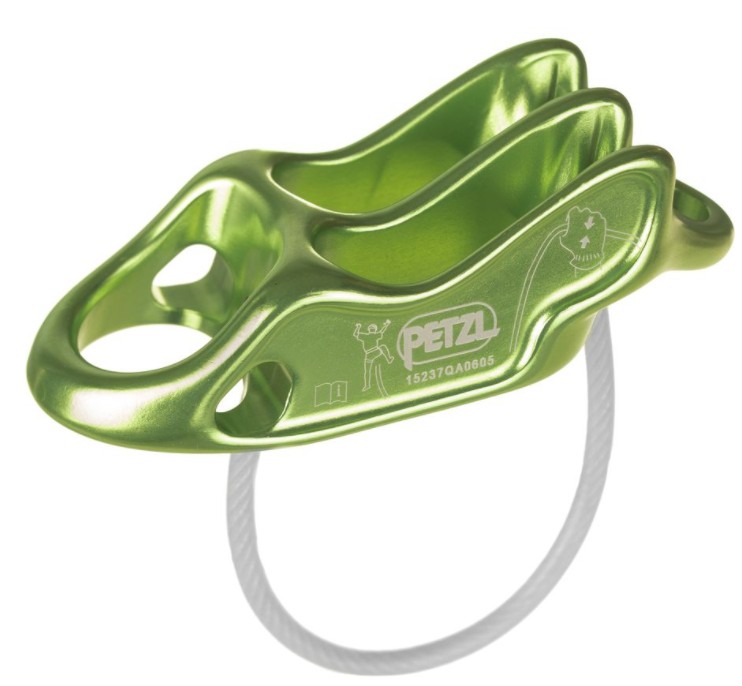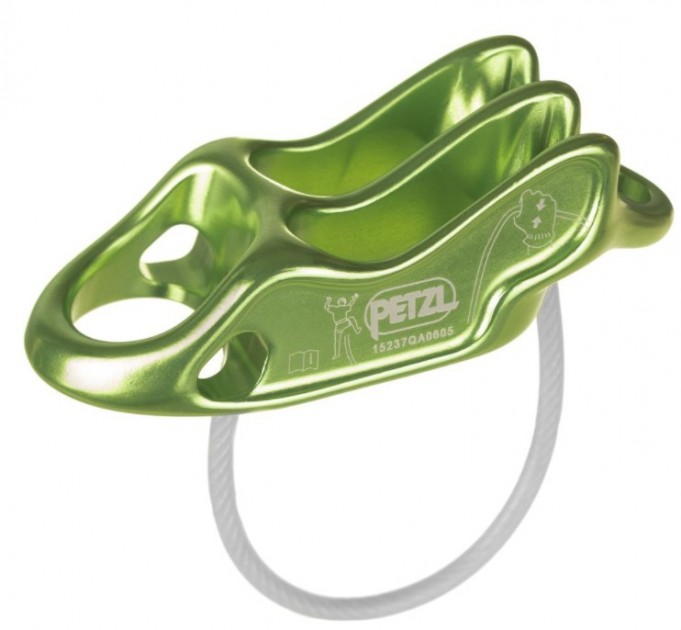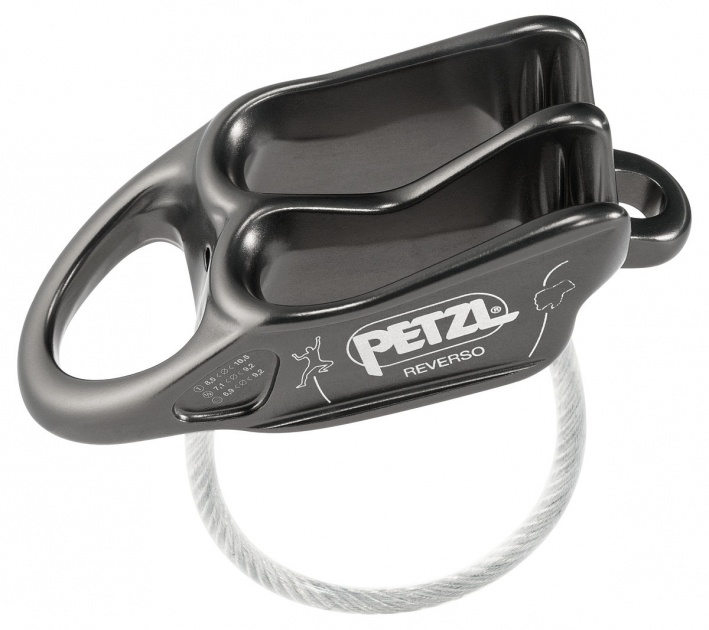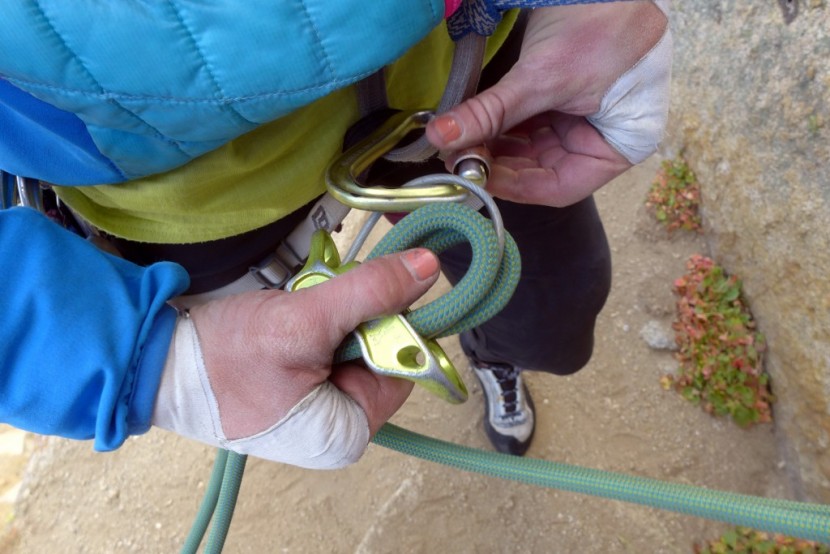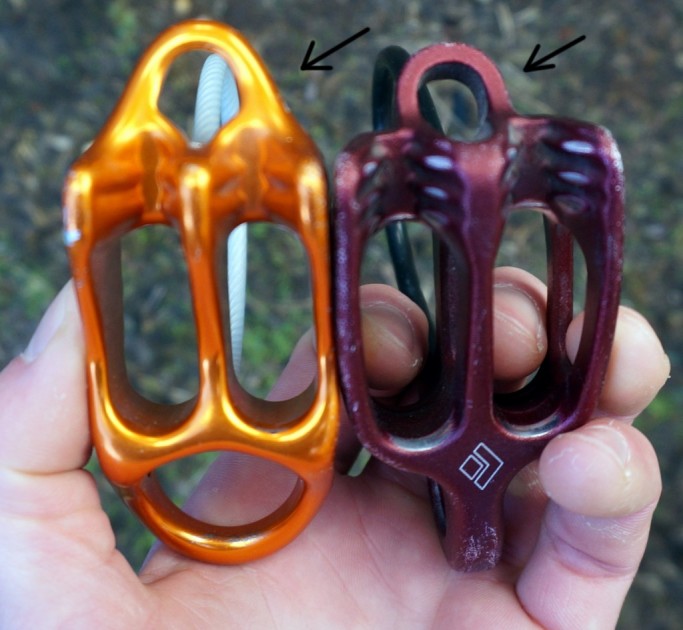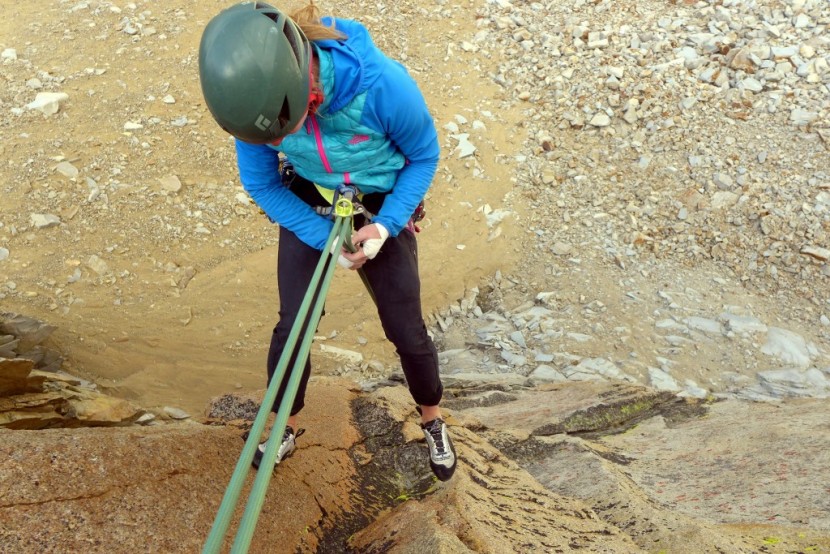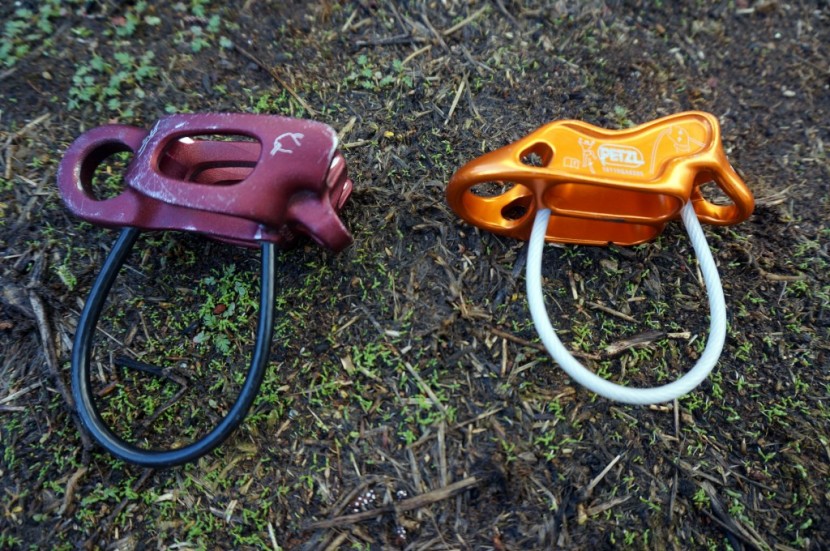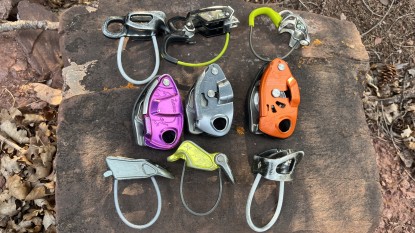This belay device has been amended since our test period. Check out the details and differences below.
June 2020Petzl Reverso Review

Our Verdict
Our Analysis and Test Results
Reverso 4 vs. Reverso
Since our test period, Petzl has released an updated model of this device, simply called the Reverso (the model we tested was the Reverso 4). The updated Reverso is a few grams lighter (57 g vs the Reverso 4's 63 g) and has some cosmetic changes, such as a flat top and rounded edges, which Petzl says is part of a design to increase durability and longevity of the device. The new model accepts ropes sized from 8.5 to 10.5 mm. Compare the two below; the green version shown first is the model we tested, followed by the new Reverso in grey.
We're now linking to the updated model, but be aware that we have yet to test it. The review below pertains to the older Reverso 4.
Hands-On Review of the Reverso 4
The Petzl Reverso is a tube-style belay device with auto-block capability. Its superior performance with skinnier ropes (down to 7.5mm) strengthens its case for use with twin or half ropes.
Please don't mistake our discussion of the Reverso, which is intended for the purpose of helping you make a purchasing decision, for actual instruction in the methods of using the device. For that, check out this instructional video put out by Petzl.
Catch/Bite
It is difficult for us to accurately determine the difference in catch between all of the different simple tube devices. The Reverso seems to bite as well as the Petzl Verso, or any of the other choices, that is, plenty good enough. The one variation we observed though was the hand strength required to lock off and hold a resting climber in place. The enlarged hole on the new Reverso for releasing a weighted rope in auto-block mode got in the way when we were trying to lock off. This means it requires slightly more strength to hold the rope still with the Reverso than with some others.
Lowering/Rappelling
With two friction channels, the Reverso is capable of rappelling two ropes. There are also two options for orienting the belay bight; use the teeth for higher friction or smooth things out in the other direction. In blind tests comparing the lowering friction and performance against other similar tube-style devices, we found the Reverso ever so slightly more jerky.
Feeding Slack
All of the classic tube-style devices feed slack out to a leader consistently well. Unlike the assisted braking models, there is little chance of getting into a short roping tug of war with a device that has no levers or cams to depress. Each tube device performed slightly better or worse depending on the texture and stiffness of the rope used, so it's hard for us to generalize. However, we liked the Reverso most with smaller diameter ropes (in the sub-9.5mm range).
Weight/Bulk
At 2.2 ounces, the Reverso is tied for the second lightest belay device overall and is the lightest to offer auto-block mode for belaying a second off an anchor. Its closest competitor that incorporates the same features weighs close to an ounce more.
Auto-block (resistance belaying a second)
The largest difference between the Reverso and the other auto-block devices we compared it to is the friction in auto-block mode. In our tests, the Reverso created a fair bit more resistance, and this became the deciding factor when we chose our favorite. This difference may not sound like much but was easily identified in blind tests we did in our lab (garage). Over a long pitch or in the presence of rope drag it becomes even more noticeable. Frequent multi-pitchers that like to belay off the anchor can save energy (and elbow pain), by choosing the BD ATC Guide instead.
Value
The Reverso and ATC Guide are similar in price. They are cheaper than other devices we tested that are capable of belaying directly off an anchor. However, since we didn't find this one to be the highest performing of these choices, we wouldn't call it the best value overall. If your climbing plans include even an occasional multi-pitch route, we suggest you fork up the extra money to get one of these auto-block devices over the cheaper basic versions.
Conclusion
For years the Petzl Reverso and Black Diamond ATC Guide have been two of the most popular belay devices among American multi-pitch climbers. It's easy to understand why: they're both affordable, smooth, and reliable. At first glance, our testers thought they would prefer the Reverso because it's lighter and the shiny anodized finish looks cooler. However, when we compared the two side-by-side with the same ropes in a controlled environment (especially in auto-block mode) the ATC Guide came out on top. The difference is small though, so if you've already got a Reverso and like it, don't feel any pressure to switch.


